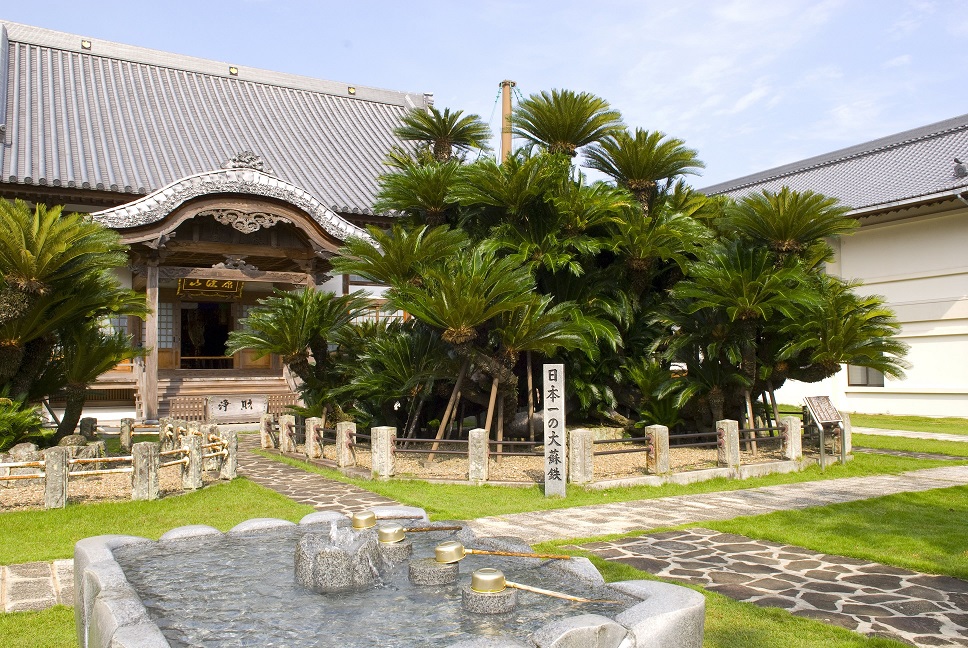Number of views1,314Times
- Address
Oita-ken, Hayami-gun, Hiji-machi 1921
- Business hours
9:00-17:00
- Prices
- Entrance Fee: Free
* Hiho-Den (the secret treasure house) is not available for viewing. - Homepage
- http://shouokuji.jp/
- Enquiries
- [Tel] 0977-72-2561
- Parking lot
- Maximum capacity of 20 vehicles (bus parking possible)
- Access
- 5 minutes by car from Hiji Interchange and 10 minutes on foot from Youkoku Station
Map
Search Area



Previously known as Saimyo-ji, this temple was renamed “Yasutoku Sho-okuji” in 1607. It was named after the posthumous Buddhist name given to two women. One was Kaga, the wife of Nobutoshi Kinoshita, the first lord of Hiji Domain. The other was Asahi-no-Kata, the mother of Kodai-in, who was Hideyoshi Toyotomi's legal wife. Inside the temple grounds housing the graveyard of the Kinoshita Clan, there is a landscape garden whose design is attributed to the famous artist Sesshu. It boasts a secret treasure house as well as a giant sago palm tree, the largest cycad of its type in Japan. Standing in the garden in front of the main temple hall is this famous sago palm tree. Originally planted in the garden of Bungo Funai Castle, it was brought to its present location in 1656 by Toshiharu Kinoshita, the second lord of the Hiji Domain. Said to be about 700 years old, and boasting a height of 6.1 meters and a girth of 6.4 meters, the shape of this tree is overwhelming. In the northwest corner of the temple grounds, there is a graveyard for daimyo established around 1630 by Nobutoshi Kinoshita, the first lord of the Hiji Domain. Located to the northwest of the main temple hall, there are 52 grave markers for the lords of successive generations of the Hiji Domain, their family members and their vassals. It could be said that the number, scale and splendor of these graves are the best in the prefecture. (Note: Since the 13th and 16th lord of Hiji Domain had Shinto funerals, they are interred in graves at Aoyama Cemetery in Tokyo.) In 2003, this temple was designated as a tangible cultural asset by Hiji Town.